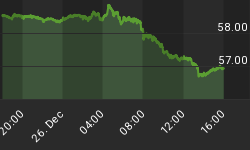Flashback May 24, 2006 CNN Money reported Yields throw the Fed a curve.
Fed Chairman Ben Bernanke repeated the view expressed by his predecessor Alan Greenspan that an inverted yield curve is no longer a good indicator of a recession ahead.
"In previous episodes when an inverted yield curve was followed by recession, the level of interest rates was quite high, consistent with considerable financial restraint. This time, both short- and long-term interest rates -- in nominal and real terms -- are relatively low by historical standards."
Apparently Greenspan and Bernanke are in agreement that the yield curve does not mean what it used to.
The Yield Curve 2000-2007

A snapshot as of February 26, 2007.

Flash Forward February 26, 2007
Greenspan says Recession 'possible' by end of year.
Former Federal Reserve Chairman Alan Greenspan said Monday it is "possible" the U.S. economy might fall into recession by the end of the year. He said the U.S. economy has been expanding since 2001 and that there are signs the current economic cycle is coming to an end.
"When you get this far away from a recession, invariably forces build up for the next recession, and indeed we are beginning to see that sign," Greenspan said via satellite link to a business conference in Hong Kong. "For example in the U.S., profit margins ... have begun to stabilize, which is an early sign we are in the later stages of a cycle."
Greenspan also said he has seen no economic spillover effects from the slowdown in the U.S. housing market.
"We are now well into the contraction period and so far we have not had any major, significant spillover effects on the American economy from the contraction in housing," he said.
OK guys, which is it? Does the yield curve mean what it used to or not?
On February 17th Greenspan said Worst of U.S. housing slowdown over.
"I think the worst is behind us," Greenspan, 80, told a Toronto conference Wednesday, during a speech broadcast live via satellite. "We are in the midst of a very significant inventory liquidation of unsold new homes."
Greenspan's comments represent a view similar to those of his successor, Ben S. Bernanke. Bernanke told the Senate Banking Committee this week that the Fed expects economic growth to strengthen "somewhat as the drag from housing diminishes."
Fed policymakers predicted gross domestic product will increase by 2.5 per cent to 3 per cent this year.
In the statement after the Federal Open Market Committee's most recent meeting on Jan. 31, the Fed said recent data suggest "somewhat firmer economic growth," while the housing market is showing "some tentative signs of stabilization."
Housing Inventory
The Chicago Tribune is reporting Canceled contracts masked glut of homes.
Housing analyst David Seiders told Chicago-area builders Thursday that the federal estimate of 3.5 million homes for sale at the end of 2006 is "grossly understated."
"There is a big inventory overhang out there, and it's bigger than anybody understands," he said.
In an annual forecast on the local industry in Addison, Seiders, chief economist of the National Association of Home Builders, cited the high level of sales contract cancellations in 2006. It created a snag in the recordkeeping, so many homes marked as sales in government data ended up back on the market too late to be counted as inventory, he said.
"Cancellation rates more than doubled between the end of 2005 and the end of 2006, meaning that net sales for the year nationally may be down 65 percent."
Employment
In addition to the yield curve not meaning what it used to, it seems that employment does not mean what it used to either. The Wall Street Journal is reporting Policy Makers At Fed Rethink Inflation's Roots.
For decades, a simple rule has governed how the Federal Reserve views the nation's economy: When unemployment falls too low, inflation goes up, and vice versa.
But Fed officials have rethought that notion. They believe it takes a far bigger change in unemployment to affect inflation today than it did 25 years ago. Now, when inflation fluctuates, they are far more likely to blame temporary factors, such as changes in oil prices or rents, than a change in the jobless rate.
Summary
-
The yield curve seems to be strongly hinting at recession except for the fact that it does not mean what it used to. Besides, data suggests a "somewhat firmer economy".
-
Then again, "a recession is possible by the end of the year" so maybe the yield curve really does mean what it used to.
-
Of course if a recession does happen, a housing spillover will have nothing to do with it.
-
The primary reason we should not worry about a housing spillover is because it hasn't mattered yet.
-
Besides, housing is stabilizing even though Housing Starts and Permits are Plunging.
-
And somehow "We are in the midst of a very significant inventory liquidation of unsold new homes" even though inventory is rapidly rising because of cancellations.
-
And finally, after a decade of thinking things through, the best the Fed can come up with regarding the cause of inflation is that it is not related to employment but instead it is caused by "temporary factors".
A careful analysis of the above comments leads me to believe that Greenspan and Bernanke both stepped through the magic looking glass and are now commenting on happenings in wonderland.
















